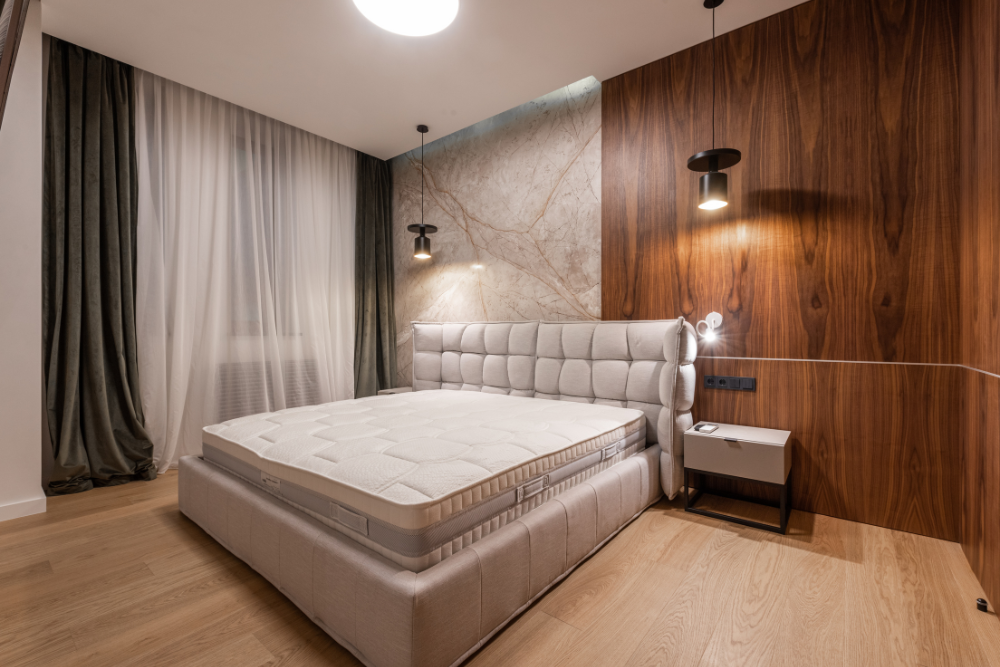A mattress is a significant investment for your sleep and health, and protecting it is essential for ensuring its longevity and hygiene. One of the simplest yet most effective ways to shield your mattress is by using a mattress protector. In this guide, we’ll explore what mattress protectors are, their types, benefits, how to choose the right one, and ho to care for them properly.
What is a Mattress Protector?
A Mattress Protectors is a removable bedding item that fits over or encases your mattress to shield it from spills, allergens, bacteria, and general wear and tear. While often confused with mattress pads or toppers, protectors are designed specifically to protect rather than add comfort.
Benefits of Using a Mattress Protector
1. Protects Against Spills and Stains
Mattress protectors are especially useful for preventing spills from seeping into your mattress. Whether it’s a nighttime accident, spilled drink, or pet mess, a waterproof protector can save your mattress from permanent stains and odors.
2. Guards Against Allergens
Protectors block dust mites, pet dander, mold, and other allergens from accumulating in the mattress, making them ideal for people with allergies or asthma.
3. Enhances Mattress Lifespan
By shielding the mattress from moisture, dust, and debris, a protector helps preserve the integrity and hygiene of the mattress, extending its usable life.
4. Prevents Bed Bugs
Encasement-style mattress protectors can serve as a barrier to bed bugs. These zippered covers fully encase the mattress, preventing bugs from entering or exiting.
5. Improves Hygiene
Mattresses naturally absorb sweat, skin flakes, and body oils over time. A protector creates a washable barrier that maintains cleanliness and hygiene.
6. Maintains Warranty Validity
Many mattress warranties are void if the mattress is stained. Using a protector ensures you meet warranty conditions.
Types of Mattress Protectors
There are several types of mattress protectors available, depending on your needs:
1. Fitted Sheet Style
This style fits over the mattress like a fitted sheet, covering only the top and sides. It’s easy to remove and wash, and offers basic protection.
2. Zippered Encasement
This fully encases the mattress with a zippered closure, offering complete protection from allergens, bed bugs, and moisture. Ideal for those with allergies or infestations.
3. Elastic Strap Style
These have corner straps to secure the protector on top of the mattress. They’re easier to install but may move more during sleep.
4. Waterproof Protectors
Made with a waterproof membrane (usually polyurethane), these are best for protecting against liquids, making them popular in homes with kids or pets.
5. Cooling Mattress Protectors
Infused with cooling materials like bamboo or phase change fabric, these are great for hot sleepers who need protection without added heat.
Materials Used in Mattress Protectors
The effectiveness and comfort of a mattress protector largely depend on its material:
- Cotton
Soft, breathable, and natural. Often blended with waterproof linings for protection.
- Bamboo
Eco-friendly, breathable, and hypoallergenic. Also moisture-wicking and temperature-regulating.
- Polyester
Durable and budget-friendly. Often combined with waterproof backings.
- Tencel
Derived from wood pulp, Tencel is smooth, breathable, and gentle on sensitive skin.
- Vinyl
Used in cheaper waterproof protectors. Not breathable and may produce noise; less ideal for regular use.
How to Choose the Right Mattress Protector
Choosing the right protector depends on several factors:
1. Purpose
Determine what you need protection from—liquids, allergens, bed bugs, or just dust and dirt.
2. Material Preference
Choose a material that suits your comfort level. If you’re a hot sleeper, breathable fabrics like bamboo or Tencel are ideal.
3. Fit and Size
Ensure the protector matches the size and depth of your mattress. Some deep mattresses need protectors with extra depth.
4. Ease of Cleaning
Opt for machine-washable protectors that are easy to maintain and don’t degrade after multiple washes.
5. Noise Level
Some waterproof protectors can be crinkly or noisy. Look for quiet, soft options that don’t disrupt sleep.
6. Allergy-Friendly Features
If you suffer from allergies, look for certified hypoallergenic or allergen-barrier protectors.
How to Care for a Mattress Protector
Proper care ensures your protector lasts long and continues to function effectively:
-
Read the Label: Always follow the manufacturer’s washing and drying instructions.
-
Regular Washing: Wash your mattress protector every 1-2 months or immediately after any spill or accident.
-
Avoid High Heat: Heat can damage waterproof membranes. Use low or medium heat settings.
-
Don’t Bleach Unless Specified: Harsh chemicals can degrade the fabric or waterproof backing.
-
Air Dry When Possible: Extends the life of the waterproof layer.
Common Myths About Mattress Protectors
- Myth: Mattress Protectors Are Uncomfortable
Modern protectors are designed with soft, breathable materials and minimal noise. You likely won’t notice it's there.
- Myth: Only Kids or Pets Need Them
Everyone can benefit from mattress protection—sweat, allergens, and bacteria are common for all.
- Myth: They’re Hard to Clean
Most are machine washable and dryable, making maintenance easy.
Best Practices for Mattress Protection
-
Always use a protector from day one.
-
Pair with a mattress topper for added comfort if needed.
-
If dealing with bed bugs or allergies, choose a full encasement protector.
-
Keep a spare protector to rotate during laundry.
Conclusion
A mattress protector is a simple yet crucial tool in maintaining the health, cleanliness, and longevity of your mattress. From defending against spills and allergens to enhancing sleep hygiene, the benefits far outweigh the modest cost. Whether you’re a parent, allergy sufferer, pet owner, or just someone who values their sleep investment, a high-quality mattress protector is a must-have. Choose wisely based on your needs and enjoy a cleaner, healthier, and longer-lasting sleep environment.



